
Geddy Lee Weinrib is a Canadian musician, best known as the lead vocalist, bassist, and keyboardist for the rock group Rush. Lee joined the band in September 1968 at the request of his childhood friend Alex Lifeson, replacing original bassist and frontman Jeff Jones. Lee's solo effort, My Favourite Headache, was released in 2000.

Rush was a Canadian rock band that primarily comprised Geddy Lee, Alex Lifeson (guitar) and Neil Peart. The band formed in Toronto in 1968 with Lifeson, drummer John Rutsey, and bass guitarist and vocalist Jeff Jones, whom Lee immediately replaced. After Lee joined, the band went through several line-up changes before arriving at its classic power trio line-up with the addition of Peart in July 1974, who replaced Rutsey four months after the release of their self-titled debut album; this line-up remained intact for the remainder of the band's career.
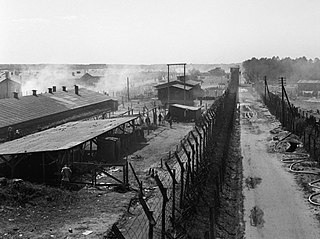
Bergen-Belsen, or Belsen, was a Nazi concentration camp in what is today Lower Saxony in northern Germany, southwest of the town of Bergen near Celle. Originally established as a prisoner of war camp, in 1943, parts of it became a concentration camp. Initially this was an "exchange camp", where Jewish hostages were held with the intention of exchanging them for German prisoners of war held overseas. The camp was later expanded to hold Jews from other concentration camps.

Fly by Night is the second studio album by the Canadian rock band Rush, released on February 14, 1975, by Mercury Records. It was the first Rush album to showcase elements of progressive rock for which the band has become known. It was also the first to feature lyricist and drummer Neil Peart, who replaced original drummer John Rutsey the previous summer just prior to the band's first North American tour. Peart took over as Rush's primary lyricist, and the abundance of fantastical and philosophical themes in his compositions contrasted greatly with the simpler hard rock of the band's debut album.
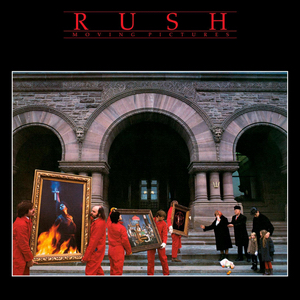
Moving Pictures is the eighth studio album by Canadian rock band Rush, released on February 12, 1981, by Anthem Records. After touring to support their previous album, Permanent Waves (1980), the band started to write and record new material in August 1980 with longtime co-producer Terry Brown. They continued to write songs with a more radio-friendly sound, featuring tighter and shorter song structures compared to their earlier albums.
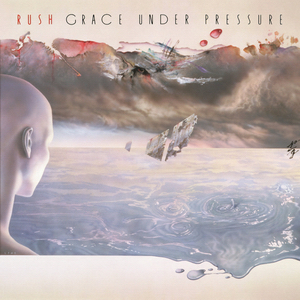
Grace Under Pressure is the tenth studio album by Canadian rock band Rush, released April 12, 1984, on Anthem Records. After touring for the band's previous album, Signals (1982), came to an end in mid-1983, Rush started work on a follow-up in August. The band had decided to not work with longtime producer Terry Brown, who had collaborated with Rush since 1974. The new material accentuated the group's change in direction towards a synthesizer-oriented sound like its previous album. After some difficulty finding a suitable producer who could commit, the album was recorded with Peter Henderson.

Power Windows is the eleventh studio album by Canadian rock band Rush, released on October 11, 1985 in Canada by Anthem Records and on October 21, 1985 in the United States. After touring in support of their previous album, Grace Under Pressure (1984), the band took a break and reconvened in early 1985 to begin work on a follow-up. The material continued to display the band's exploration of synthesizer-oriented music, this time with the addition of sampling, electronic drums, a string section, and choir, with power being a running lyrical theme. Power Windows was recorded in Montserrat and England with Peter Collins as co-producer and Andy Richards on additional keyboards.
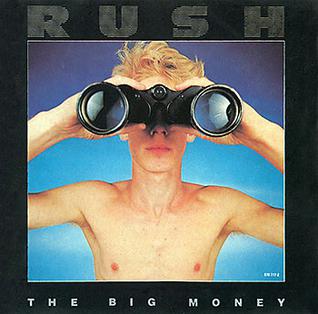
"The Big Money" is a song by Canadian rock band Rush, originally released on their 1985 album Power Windows. It peaked at #45 on the Billboard Hot 100 and #4 on the Mainstream Rock chart, and has been included on several compilation albums, such as Retrospective II and The Spirit of Radio: Greatest Hits 1974-1987.

"Closer to the Heart" is a song by Canadian rock band Rush. It was released in November 1977 as the lead single from their fifth studio album A Farewell to Kings. It was the first Rush song to feature a non-member as a songwriter in Peter Talbot, a friend of drummer and lyricist Neil Peart. It was Rush's first hit single in the United Kingdom, reaching number 36 in the UK Singles Chart in February 1978. It also peaked at number 45 in Canada and number 76 on the US Billboard Hot 100. It was inducted into the Canadian Songwriters Hall of Fame on March 28, 2010.
The Holocaust has been a prominent subject of art and literature throughout the second half of the twentieth century. There is a wide range of ways–including dance, film, literature, music, and television–in which the Holocaust has been represented in the arts and popular culture.

Josef Rosensaft was a Holocaust survivor who led the community of Jewish displaced persons through the establishment of a Central Committee of Liberated Jews that first served the interests of the refugees in Bergen-Belsen DP camp and then DP camps throughout the entire British sector.
"Red Lenses" is a song by the Canadian rock band Rush. It was released on their 1984 album Grace Under Pressure. In the album's liner notes, the song's title and lyrics are in lower case only.
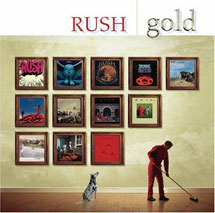
Gold is a compilation album by Canadian rock band Rush, released on April 25, 2006.
"Freewill" is the second track on the 1980 album Permanent Waves by Canadian progressive rock band Rush. The song's music was composed by Geddy Lee and Alex Lifeson, and its lyrics written by Neil Peart. In a 2016 review of Rush discography for Ultimate Classic Rock, Eduardo Rivadavia described "Freewill" as a "cerebral but remarkably radio-friendly" song. Lee has stated that the final verse of "Freewill" is at the highest part of his vocal range.
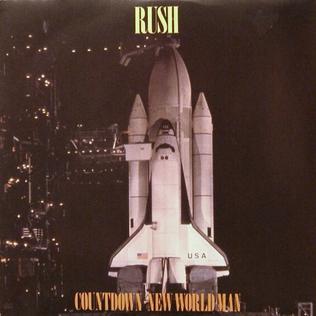
"Countdown" is a song by Rush from their 1982 album Signals. Its lyrics are about the first launch of the Space Shuttle Columbia the previous year. The song incorporates audio from voice communications between astronauts John Young and Robert Crippen and ground control, specifically Ascent CAPCOM Daniel C. Brandenstein and with commentary from Hugh Harris, Kennedy Space Center Public Affairs Officer, leading up to the launch through to LOS just after Press to Rota.
We met our liaison man, who conducted us safely into the "V.I.P." zone in the pre-dawn hours. We were due to play that night in Dallas, so we couldn't wait much longer. Finally they announced that the launch would be scrubbed for that day. Well, we ran for the car, and our daring driver sped off, around the traffic jams, down the median of the highway, and got us to the airport barely in time.
The next night we had a show in San Antonio, after which we drove off immediately, clambered into a hired jet, and flew straight back to Florida. This time the launch took place on schedule, and it was SOMETHING!!
I remember thinking to myself as we flew back to Fort Worth after a couple days without sleep: "We've got to write a song about this!" It was an incredible thing to witness, truly a once-in-a-lifetime experience. I can only hope that the song comes even close to capturing the excitement and awe that we felt that morning.
— Neil Peart in the Signals tour book.

"Show Don't Tell" is the first single on Canadian rock band Rush's 1989 album Presto. The song peaked at number one on the U.S. Hot Mainstream Rock Tracks Chart, the second of five songs by Rush to top the chart.
Nanette Konig-Blitz is a Bergen-Belsen concentration camp survivor and former classmate of Anne Frank. She has lived in São Paulo, Brazil since 1953. In 2015, she published a book about being a Belsen survivor called Eu Sobrevivi ao Holocausto. On Holocaust Memorial Day 26 January 2018, Nanette's book was published in English with the title Holocaust Memoirs of a Bergen-Belsen Survivor & Classmate of Anne Frank.
"Witch Hunt" is a song by Canadian rock band Rush. It was released on their 1981 album Moving Pictures, and unlike many other Rush songs it was a true studio production, with a variety of percussion instruments and overdubs, and a separate keyboard player. It is the first of four songs in what has been called the band's "Fear" series, the other three being "The Weapon", "The Enemy Within", and "Freeze", although this song is the third part of the series in order, and went on reverse chronological order by the album.
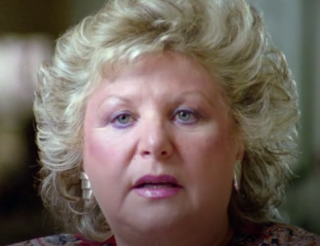
Lilly Appelbaum Malnik is a Belgian-American Holocaust survivor who helped create the United States Holocaust Memorial Museum. She was captured by Nazi soldiers in 1944, during the German occupation of Belgium, and was imprisoned at the Mechelen transit camp in Belgium, Auschwitz concentration camp in Poland, and the Bergen-Belsen concentration camp in Germany. She was liberated from Bergen-Belsen in April 1945 by the British Army. Malnik's mother, two siblings, aunt and uncle, and grandaunt and granduncle were all killed during The Holocaust in Belgium. After World War II, she emigrated to the United States and was reunited with her father. She married Abraham Malnik, a Lithuanian Holocaust survivor, and they assisted in the founding of the United States Holocaust Memorial Museum. With her granddaughter, the American social media content creator Miriam Ezagui, Malnik has made TikTok videos detailing life in concentration camps.














